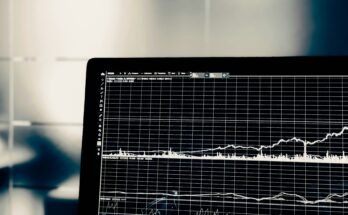Forex trading, also known as foreign exchange trading, is one of the most dynamic and lucrative financial markets in the world. With trillions of dollars traded daily, Forex Traders offers opportunities for traders to profit from the fluctuations in currency exchange rates. However, while it might seem enticing, jumping into the forex market without a strong foundation of knowledge and strategy can lead to significant financial losses.
To help you get started on the right foot, here are essential tips every forex trader should know before entering the market. From understanding market fundamentals to managing risk, these insights are designed to set you up for long-term success.
Understand the Basics of Forex Trading
Before you even think about executing your first trade, make sure you understand how forex trading works. The market operates 24 hours a day, five days a week, and involves trading currency pairs such as EUR/USD, GBP/JPY, or USD/JPY. Each currency pair represents the exchange rate between two currencies, and your goal as a trader is to predict whether one currency will strengthen or weaken against the other.
Key Market Concepts to Familiarize Yourself With:
- Pips: The smallest price movement in a currency pair, usually the fourth decimal place.
- Leverage: A tool that allows you to control a larger position with a smaller amount of capital. High leverage can amplify both gains and losses.
- Spread: The difference between the bid (sell) price and the ask (buy) price, representing the broker’s fee for facilitating the trade.
- Common Currency Pairs: Major pairs like EUR/USD or minor pairs like AUD/CAD.
Studying these terms and understanding how the market functions is the first step toward becoming a skilled trader.
Develop a Trading Plan
A well-thought-out trading plan serves as your roadmap in the unpredictable world of forex. It outlines your trading goals, risk tolerance, strategies, and rules for entering and exiting trades. Without a plan, you’re more likely to make impulsive decisions based on emotions rather than logic.
Key Components of a Trading Plan:
- Define Your Goals:
- Are you trading for short-term gains or long-term wealth accumulation?
- How much time can you dedicate to trading each day?
- Set Risk Parameters:
- Decide on your risk-reward ratio for each trade.
- Determine how much of your trading capital you’re willing to risk per trade (commonly 1–2%).
- Establish Entry and Exit Rules:
- Use technical indicators like moving averages or support and resistance levels to guide your entries.
- Set stop-loss and take-profit levels to automate your exits and protect your capital.
A clear trading plan not only helps you stay disciplined but also ensures you remain consistent in your approach.
Stay Updated on Economic and Market News
The forex market is heavily influenced by global economic events, central bank policies, and geopolitical developments. For example, an interest rate hike by the U.S. Federal Reserve often causes the USD to strengthen against other currencies.
Important Factors to Monitor:
- Economic Indicators:
- Gross Domestic Product (GDP)
- Employment reports
- Inflation data
- Central Bank Announcements:
- Interest rate decisions
- Quantitative easing programs
- Geopolitical Risks:
- Trade wars, political instability, or natural disasters that can impact currency volatility.
Following a reliable financial news source or using an economic calendar can help you stay ahead of market movements.
Practice with a Demo Account
Before risking real money, take advantage of a demo trading account offered by most online forex brokers. This allows you to trade with virtual funds in a simulated market environment, giving you the opportunity to test your strategies and familiarize yourself with the trading platform’s features.
Benefits of Using a Demo Account:
- No financial risk while learning the basics of trading.
- Test-drive different trading strategies to identify what works best for you.
- Experiment with various technical indicators and tools.
Remember, while a demo account is invaluable for skill-building, there’s a psychological difference when real money is on the line. Transitioning from a demo account to live trading requires discipline and emotional control.
Master Risk Management
Successful forex traders emphasize risk management just as much as strategy. Without proper risk controls, even the best trading strategy can lead to losses.
Top Risk Management Techniques:
- Use Stop-Loss Orders:
- A stop-loss automatically closes a trade once it reaches a predetermined loss level. It prevents a single bad trade from wiping out your account.
- Position Sizing:
- Adjust the size of your trades based on your capital and risk tolerance. Avoid over-leveraging, as it can magnify losses.
- Diversify Your Trades:
- Avoid putting all your capital into one trade or currency pair. Diversification helps reduce exposure to specific market risks.
Managing risk is not just about protecting your capital; it’s about ensuring that you can stay in the game long enough to see consistent results.
Focus on Technical and Fundamental Analysis
Forex trading requires a mix of technical analysis, which involves studying price charts and patterns, and fundamental analysis, which focuses on economic indicators and news.
Useful Tools for Technical Analysis:
- Indicators:
- Relative Strength Index (RSI): Measures the speed and change of price movements.
- Moving Averages (MA): Smooth out price action to identify trends.
- Chart Patterns:
- Head and Shoulders, Double Tops, or Triangles can help anticipate price movements.
Fundamentals to Watch:
- Understanding how economic events and policies influence currency markets is essential for informed decision-making.
Combining these two forms of analysis provides a more comprehensive view of market conditions.
Keep Your Emotions in Check
The forex market is a fast-paced, high-stakes environment that can take a toll on your emotions. Fear, greed, and overconfidence are some of the common psychological pitfalls traders face.
Tips to Stay Emotionally Balanced:
- Stick to your trading plan, regardless of short-term outcomes.
- Take breaks after losses to regain your composure.
- Avoid revenge trading, which often leads to further losses.
Mindset plays a significant role in trading success. A calm, disciplined approach can make the difference between thriving and failing in the forex market.
Choose the Right Broker
Selecting a reputable and reliable forex broker is just as important as mastering trading strategies. A good broker provides a user-friendly platform, competitive spreads, and strong customer support.
Key Factors to Consider:
- Regulation:
- Ensure your broker is regulated by a reputable authority like the FCA, ASIC, or CFTC.
- Trading Conditions:
- Look for brokers with low spreads, high liquidity, and fast execution speeds.
- Customer Support:
- Responsive and knowledgeable support can save you time and frustration.
Take the time to research brokers and read user reviews before committing to one.
Final Thoughts
Forex trading offers endless opportunities for those willing to invest time, effort, and patience. By understanding the basics, creating a sound trading plan, staying informed, and implementing strong risk management, you can set yourself up for success in this volatile yet rewarding market.
Remember, practice makes perfect, and even seasoned traders continue to learn and refine their skills. Whether you’re just getting started or looking to take your trading to the next level, these tips provide a solid foundation for navigating the forex market effectively.




